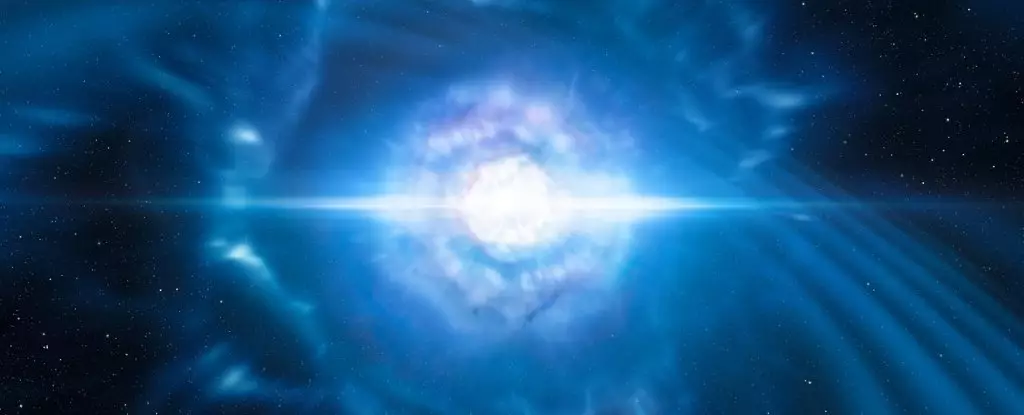In the annals of astrophysics, August 2017 marks a pivotal moment when two neutron stars collided in a celestial ballet, culminating in one of nature’s most spectacular displays: a kilonova. This event—designated AT2017gfo—was unprecedented, allowing scientists to directly observe the cataclysmic interplay between gravity and nuclear processes across the cosmos. The collision sent ripples through spacetime, detectable as gravitational waves and electromagnetic signals, which raced across the universe. Telescopes worldwide immediately turned their gaze toward the site of this cosmic phenomena, eager to capture every available detail and unravel the mysteries hidden within the explosion.
This remarkable occurrence provided a wealth of data for researchers to ponder over for years to come. It emphasized the unpredictable and violent nature of the universe, while inviting questions about the origins of heavy elements that make up the fabric of our existence. In particular, the work led by astrophysicist Albert Sneppen from the Niels Bohr Institute at the University of Copenhagen has shown that this event is not an isolated incident; rather, it serves as a window into the processes that are fundamental to cosmic evolution.
According to Sneppen and his team, the aftermath of AT2017gfo is akin to a narrative unfolding hour by hour, filled with transformative changes that no single observation could entirely capture. The rotation of the Earth hampers our view, revealing only snippets of the story at any given time. However, by synthesizing data from various telescopes located in Australia, South Africa, and the Hubble Space Telescope, researchers managed to piece together an intricate tapestry of the kilonova’s evolution. The lessons learned from combining such diverse data sources are invaluable, illustrating the concept that the whole is indeed greater than the sum of its parts.
As the explosion unfolded, a distinctive type of light emerged from the chaos, indicating the birth of heavy elements—specifically, r-process elements. Historically, the creation of these elements has been a puzzle for astronomers, who understood that stars engage in core fusion processes that create heavier elements up to iron. However, fusing elements heavier than iron requires an extraordinary energetic event, such as a supernova. The detection of strontium in the aftermath of the neutron star collision indicated that kilonovae could serve as powerful factories for these heavy elements.
The nature of the collision itself has been shown to mirror moments shortly after the Big Bang, where energy transformed into matter in a hot, plazmatic environment. As the two neutron stars collapsed, temperatures soared to billions of degrees, creating conditions conducive for elementary particles like electrons to roam freely in this heated primordial soup. This corresponds to a brief period in the universe’s early history known as the Epoch of Recombination, a time when the universe cooled sufficiently to allow particles to combine and form atoms.
During this epoch, approximately 380,000 years after the Big Bang, the plasma, which once scattered light incessantly, underwent changes that allowed photons to propagate unimpeded. By drawing parallels between the creation of atomic matter in the kilonova and this formative period, the research suggests that studying these cosmic explosions could provide insights into early universal processes.
As the kilonova’s remnants cooled and expanded, researchers, led by Rasmus Damgaard, confirmed the presence of heavy elements such as strontium and yttrium—further cementing kilonovae’s role in element production. These observations allow scientists to witness the nuances of atomic creation in real-time, measuring temperatures and examining fundamental physical processes within this explosive environment. The significance of these findings cannot be overstated; it allows us to glean insights not just into the mechanics behind kilonovae, but also into the intricate workings of atomic birth throughout the history of the cosmos.
The collision of neutron stars serves as a striking reminder of the interconnectedness of cosmic phenomena, revealing the ongoing processes that contribute to the creation of elements crucial for life. As we continue to analyze events like AT2017gfo, we gain a deeper appreciation for the complex narrative of the universe—a narrative composed of intricate explosions, cosmic evolution, and the fundamental forces that bind everything together. Indeed, the study of such cosmic events could redefine our understanding of the universe’s origins, reinforcing the idea that we are but a part of an ever-expanding cosmic narrative.


Leave a Reply